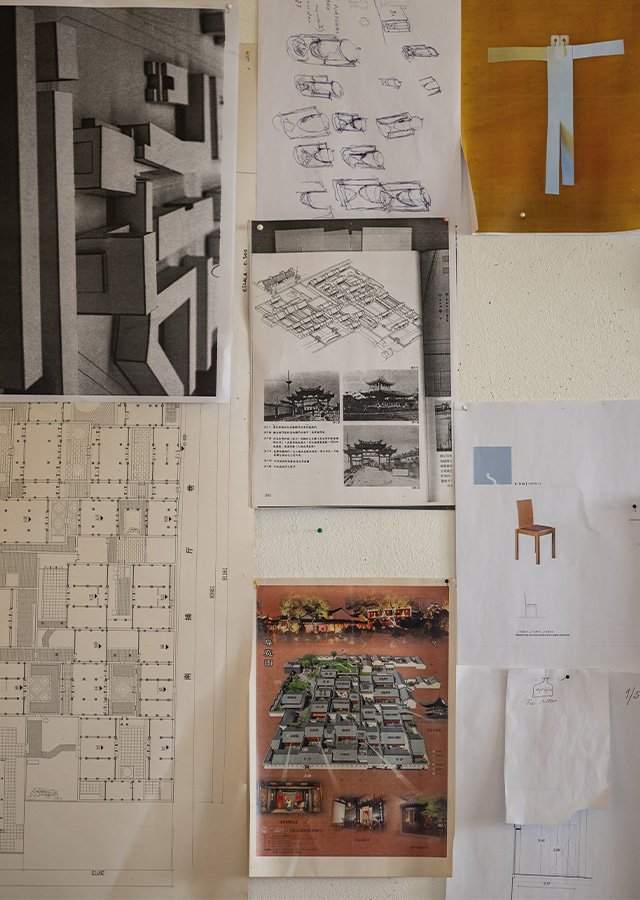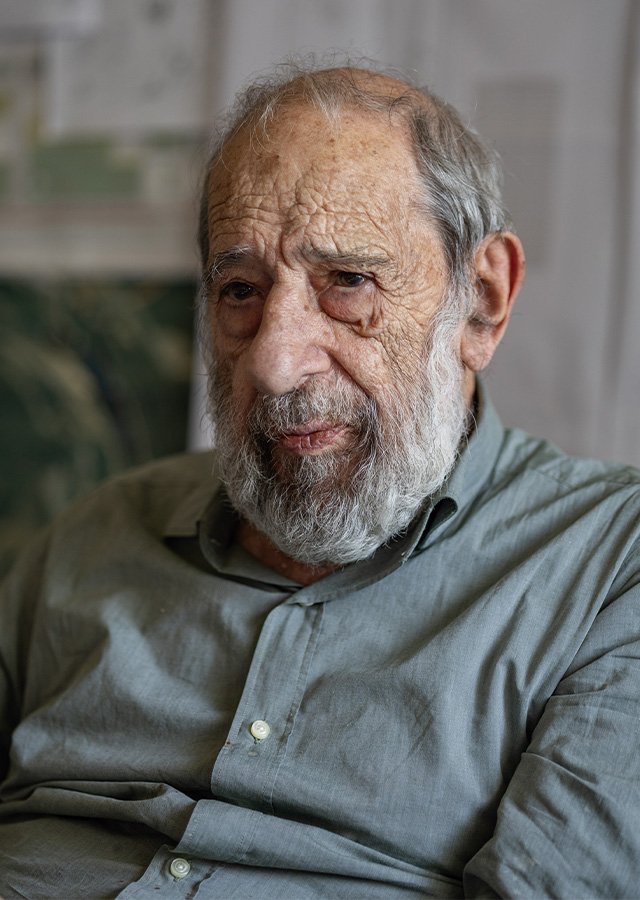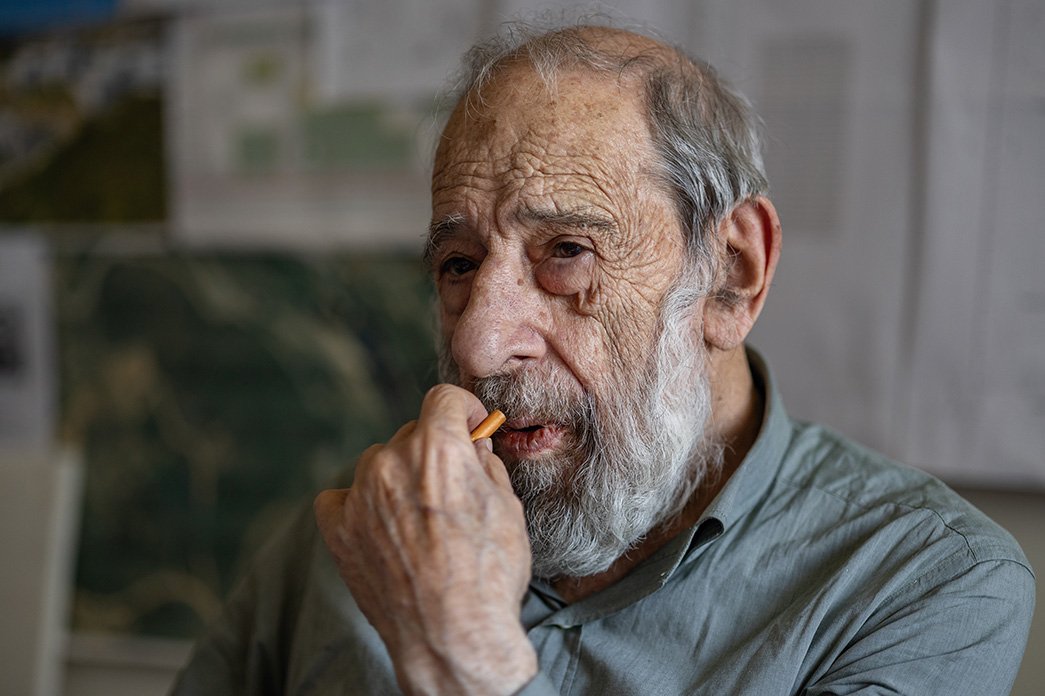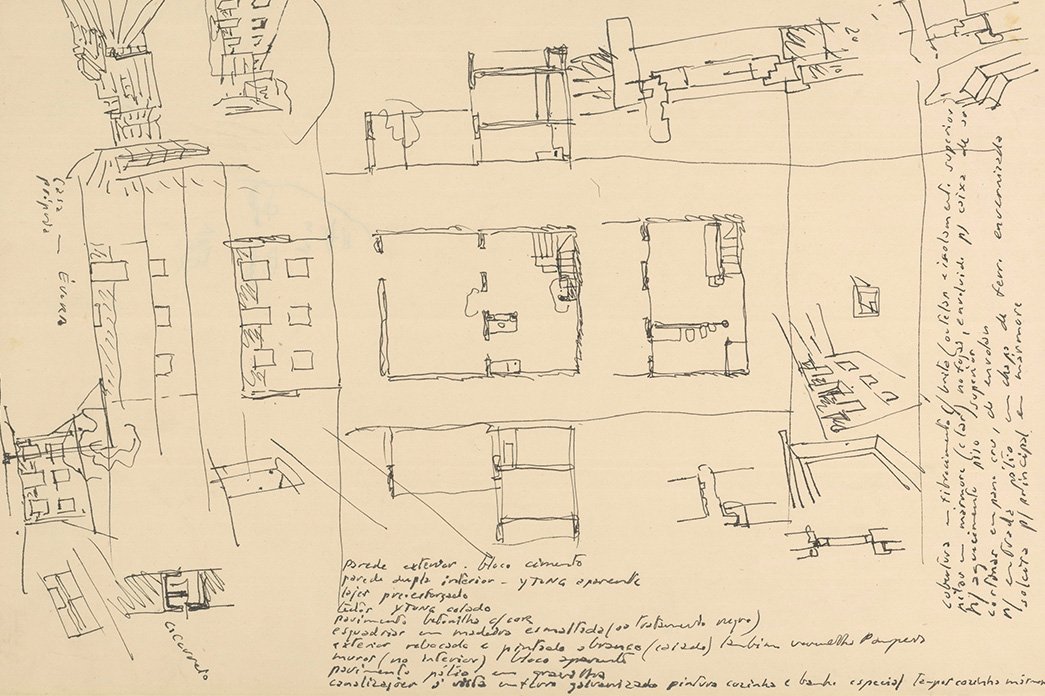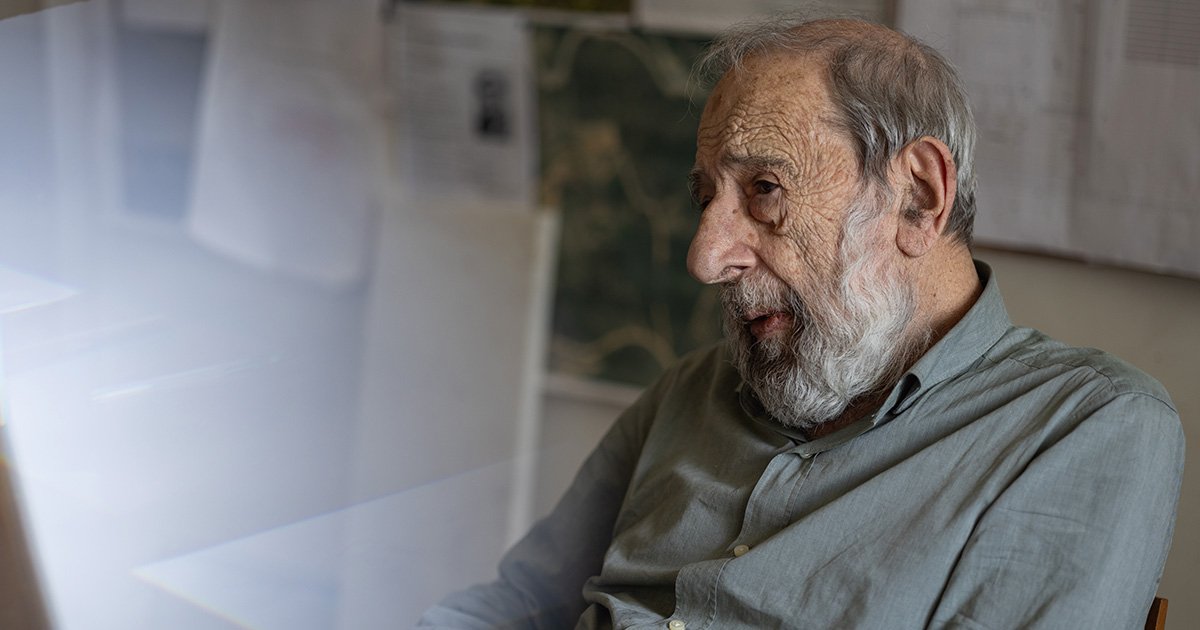
He has turned drawing lines into the guiding principle of his life, which has propelled him into a career of national and international recognition. From the Pritzker Prize to the Leão de Ouro, from social housing to museums and art centres, Álvaro Siza Vieira’s work continues to be a benchmark for new generations of architects. At the age of 91, hiseveryday life continues to be dominated by his craft, which he says is essential to prevent him from getting even older. In his studio he channels the inspiration he absorbs from the buzz of the city, continuing to design a unique legacy on a daily basis.
Tell us a bit about your daily life...
Is it here, in your studio, that you spend most of your time?
Yes, because I can’t travel, I have back problems. If
I didn’t, I would be travelling, because I do most of my work in China and
South Korea. But now it’s work-from-home.
Even though you’re not travelling nowadays, where do
you go for inspiration?
The inspiration is in the air, it’s in the cities...
Inspiration doesn’t come from within, it comes from the outside. It enters
through the eyes and goes up to the head, and therefore there is no shortage of
stimuli, references for ideas to come and innovation to take place. And there
is no shortage of history, which is so abundant in Portugal. And then there’s
the movement of the cities, multiplied, because everything is connected these
days.
Does coming here and continuing to work and do what
you love help in keeping you young? Does an artist never get old?
No, it has to be... If I didn’t work, like any mortal,
the only work would be mental and physical ageing, which is what you do after a
certain age. But working means thinking, taking responsibility, which is
fundamental, if only to avoid ageing even more.
Having lived
through so many different eras, including in terms of architecture, how do you
think about it today as it faces such concrete challenges? For example, the
issue of sustainability and even a new spatial concept of the home... How is
architecture thought of today?
The concept of
sustainability has always existed. A house has been a shelter, a place for the
family to rest and develop for centuries. Now there are new demands, basically
for a better way of life, but on the other hand, there are also greater
drawbacks. The increase in the idea of sustainability in all debates is also
closely linked to unsustainability. There are also more demanding problems,
because there is more foreseeable oversight, let’s call it that.
Do you think there is a generalised idea that
architects only work for the rich?
This is one of the unbelievable distortions that are
part of the campaign against architects, which in principle also means against
architecture. Architects have always assumed they work for the masses. In the
1920s and 1930s, the most notable works of architecture, by the most celebrated
architects, were for social housing. This is the legacy of those years. The
idea that architects only work for the rich is an invention, a regrettable
distortion, which only stems from other interests, but let’s not go there.
You have worked all over the world... Is there a city
or country that particularly fascinates you in terms of architecture?
To a certain extent, every country has something
particularly interesting about it. I like all cities and all countries, some
for one reason and some for another. Then, of course, there are the pinnacles
of beauty, but this isn’t general, although the personality of the people is
always present. If we think about Paris, Venice, Naples, New York, there’s a
particular intensity, a particular authenticity... This may include a lot of
fake stuff, but what remains is the authenticity. When skyscrapers grow like
plants in New York, this is not the architects’ whim, but economic and social
concessions. Now, when you put up a tower at the foot of the [Arrábida] bridge
that is taller than the bridge or than a national monument, the result is a bad
one. That’s not to say that it’s ugly, but rather that it’s inappropriate, it’s
fake, it lacks authenticity.
We have more and more foreigners with a lot of money
who are investing here. Do you think Portugal has luxury potential?
There are luxuries, but there are also inequalities,
and they are very evident. Portugal is very peaceful. But everything that
exists in other countries also exists here. There will also be some interest
due to a certain underdevelopment in relation to other countries. But I think
that many people come because they find it more peaceful, they are beginning
not to come because of the cost of living. This is the main reason I see. The
climate, the natural and built beauty, the presence of history in the landscape
and perhaps a little, too, the major differences in the landscapes of such a
small country.
You also work a lot with the Asian market. What are
the challenges in working for these countries?
I almost only work for the Eastern market; in Portugal
I have very little work. The experience I have is in China and South Korea.
Excellent working conditions. And the number one reason is clients who want
quality, who treat architects very well, who don’t say that they are capricious
and who provide good working conditions. You can feel a desire to do things
with quality. Such a thing is rare here.
Do you see yourself as a man from Oporto? Do you value
your roots?
I like living in Oporto, apart from having friends,
etc., I even like it from the point of view of the climate. Oporto is also a
city with a beautiful physical backdrop. It’s the river... Oporto exists
because the river exists. It has great geographical and climatic conditions
and, as such, this is also one of the reasons why historically it has very good
architecture. I feel good here... Now I regret not being able to travel. It
would be great to get out and see other things... You can’t have everything.
Do you feel adequately recognised in Portugal or is
there a lack of recognition?
Sometimes it even makes me uncomfortable... I have a
lot of interviews, for example (he laughs)... For some people there is
recognition, for others there isn’t... As always. What there is now, and this
is the overall feeling, is actually a very harsh relationship with architects
as professionals. I’m not complaining personally, nor do I see anything
personal in it. If you talk to other architects, you’ll see that it’s not whinging,
but that the conditions really are terrible and that most of the impositions
come from the European Community, so they’re repeated in every country except
Switzerland, which is the only country where you can work in architecture in
peace. Here, for example, copyright no longer exists. An architect no longer
has the copyright he used to have. That’s tremendous. There really is this
weakness in the demand for quality, it’s obvious and it’s starting to show in
the landscape.









